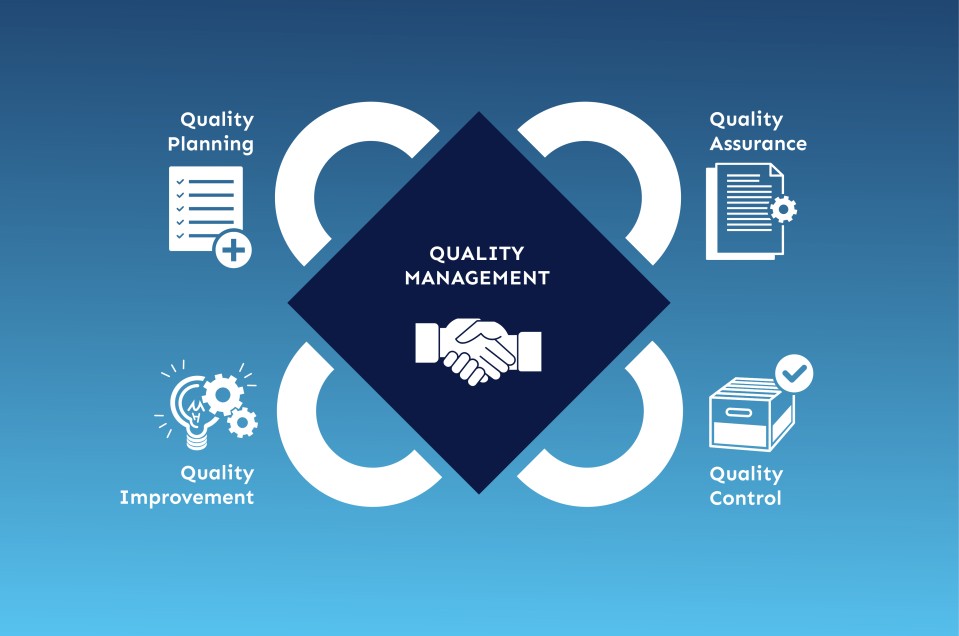Total Quality Manage...
18407 | 6 Apr 2023

Quality management is a critical aspect of running any organization. A clear and effective quality policy is essential to ensure that the organization meets its quality objectives and provides high-quality products and services to its customers. The quality policy formally expresses the organization's overall views and direction regarding quality, outlining its desired results and providing a framework for setting and verifying quality objectives. Organizations need to consider key building blocks to establish a quality policy, including stakeholder needs, quality goals and policies, and a meaningful plan. All stakeholders should be involved in the process to ensure that the policy aligns with the organization's overall policy and top management's commitments. In this article, we will discuss the importance of a quality policy, its development's key elements, and its critical role in achieving organizational success.
In today's world, determining quality is a mutual agreement between buyers and sellers, clients and suppliers. The customer plays a crucial role in defining what quality means to them and communicates their level of satisfaction through feedback, which is essential for organizations to improve their processes. This forms the basis of modern quality management systems, as defined by the ISO 9001:2008 standard.
Quality comprises all characteristics and properties of a product or service related to its ability to satisfy customer needs, such as performance, durability, reliability, aesthetics, speed, error-free operation, and ease of use. Achieving quality means meeting or exceeding customer expectations, complying with specifications and requirements, and striving for excellence.
Effective quality management connects activities and processes to achieve maximum organizational quality, ensuring the suitability of products or services for their intended use and incorporating quality into their design. Various concepts, such as ISO standards, Quality Management Systems (QMS), Quality Policies, and Continuous Improvement, are used to establish quality.
Setting goals and identifying opportunities for improvement is an ongoing process involving analyzing assessment findings, data, management reviews, complaints, and other sources of information, providing the basis for corrective or preventive actions.
Adhering to standards alone is not enough for a company to survive. To operate optimally, the company must use sampling to estimate the probability of product reclamation. Quality characteristics are those that ultimately influence customer satisfaction, and it's essential to choose suppliers that will benefit the organization in the long term to resolve complaints quickly.
A clear and effective company policy is essential to ensure quality in an organization. The Quality Policy, formally expressed by top management, outlines the organization's overall views and direction regarding quality. It helps define desired results and provides a framework for setting and verifying quality objectives, which are something to strive for or achieve in relation to quality.
To establish a quality policy, organizations need to consider key building blocks, including stakeholder needs for strategic direction, determining quality goals and policies, and implementing a meaningful plan. All stakeholders should be involved in the process to ensure that the quality policy is in line with the organization's overall policy, directing the organization's goals in terms of quality and determining top management's commitments.
The quality policy should enforce a company culture based on quality, risk management, protecting employees and the environment, investing in employees, ensuring their commitment and satisfaction, and a commitment to continuous improvement. Continuous improvement is crucial to achieving greater customer satisfaction, and this requires a motivated and committed workforce that values learning and development.
A collaborative approach with suppliers is necessary to achieve optimal results in quality management. The organization must also provide an integral servicing system to guarantee user satisfaction throughout the product's lifecycle while adhering to environmental management policies and set goals in the development and production process.
Quality regulations include system procedures, organizational regulations/procedures, and work instructions. These documents specify the necessary activities and process interconnections and detail how individual activities take place and who is responsible. They are required to maintain high-quality products and services and ensure that quality objectives are met.
To support the quality policy, quality regulations must be clearly defined and documented. System procedures specify necessary activities and process interconnections, while organizational regulations/procedures and work instructions are kept separately in a three-tier system. In a two-level system, operational procedures combine system procedures and organizational regulations to define necessary activities, interconnections of processes, and methods of implementation.
In conclusion, having a clear and effective quality policy is critical for organizations to ensure high-quality products and services. A quality policy sets the organization's overall direction and defines the desired results, providing a framework for setting and verifying quality objectives. To establish a quality policy, organizations need to consider key building blocks, including stakeholder needs, quality goals and policies, and a meaningful plan. All stakeholders should be involved in the process to ensure that the policy aligns with the organization's overall policy and top management's commitments. Continuous improvement, a collaborative approach with suppliers, and a culture based on quality are crucial to achieving greater customer satisfaction. Quality regulations, including system procedures, organizational regulations/procedures, and work instructions, must be clearly defined and documented to support the quality policy. Overall, a well-defined and documented quality policy helps organizations meet their quality objectives and maintain high-quality products and services.
What are your thoughts on the subject above? Feel free to post a comment or start a discussion.
Informative read! Your blog on the critical role of quality management and policies sheds light on the pivotal aspects that contribute to organizational success. It emphasizes the importance of robust quality management systems and well-defined policies in ensuring efficiency and excellence. Thanks for highlighting the key factors that businesses should prioritize to maintain high standards. A valuable resource for those aiming to enhance their quality management practices! https://www.lbtc.co.uk/
Leave A Comment